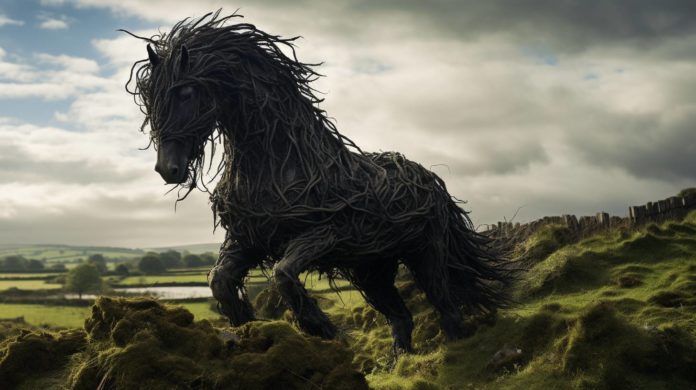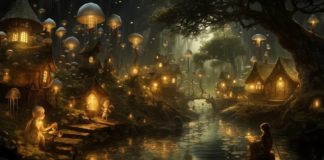Ireland, a beautiful land filled with rich histories and fascinating myths, has always been a place where folklore plays a special role. Each Irish tale, filled with unique characters, endearing charm, and mystical allure, contributes to the tapestry of local culture. Among these enigmatic figures, one stands out as both benevolent and malevolent: the Puca.
The Puca (also spelled Pooka, Phouka, Puka, or Púka) is a mythological creature believed to hail from ancient Irish folklore. Its name derives from the old Irish “pouca”, which means “goblin.” The Puca embodies both good and bad, offering assistance or creating mischievous chaos. It generally is regarded as a shape-shifter, capable of assuming various forms, from a terrifying black horse to various forms of domestic animals, and particularly enjoys taking the form of a goat.
Characteristics and Appearance
While the Puca’s form is thought to be as diverse as its actions, most agree on one common trait: its black color. Whether it chooses the form of a horse with shaggy mane or a rabbit with gleaming red eyes, it usually cloaks itself in darkness, adding to its enigmatic character. Some interpretations also suggest that the Puca may assume a human form, again typically cloaked in black and often appearing as an old man.
The Puca’s Mischief and Benevolence
The Puca is a paradox in the world of Irish folklore, known for its impish behavior and, in some accounts, its helpful character.
Mischievous by nature, the Puca often roams the countryside at night, creating chaos and scare. When assuming the form of a horse, it is known for deliberately terrorizing travelers, giving them a wild, breakneck ride before throwing them into pools or ditches. It also enjoys damaging crops, particularly on Samhain (Halloween), when it’s believed to run through fields, spoiling produce.
On the other hand, if treated with respect, the Puca can bring good fortune. It has been known to provide wise advice, guide lost people to their destinations, or help with household chores when in the form of a small creature like a goblin. However, its dual personality means it may turn these good deeds into tricks if it feels it’s not treated well.
Samhain and the Puca
Samhain, marking the end of the harvest season and the onset of winter, holds special significance for the Puca. It’s believed that the last sheaf of grain harvested on this day should be left out for the Puca. If it’s pleased, it might bring lush fertility to the land for the upcoming season. The tradition is known as “Puca’s share,” ensuring harmony between humans and the Puca.
In Modern Culture
The influence of the Puca extends beyond Irish myth into pop culture. Animated films like “The Secret of Kells” and “Song of the Sea,” incorporate Puca into their narratives, and J.K.Rowling’s Harry Potter series features a magical creature known as a Boggart which bears a resemblance to the Puca.
As we delve into the world of Irish folklore, the Puca emerges as a fascinating, paradoxical creature – mischievous yet helpful, unpredictable, yet influential. This capacity for good and bad reflects the complexity of nature, the mercurial changes of the seasons, and perhaps, the very essence of life itself. Thus, in its many forms and actions, the Puca weaves a colourful strand into the rich tapestry of Irish folklore and tradition, continuing to intrigue and fascinate us until today.

 Folklore
Folklore